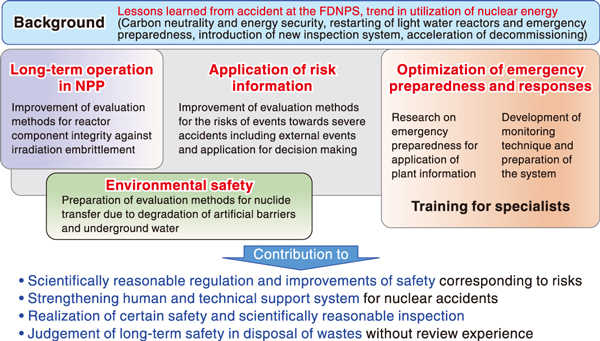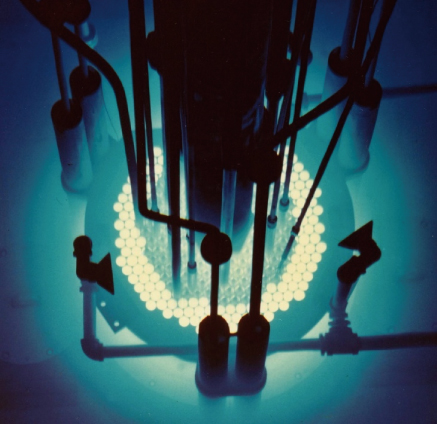
Fig.1 Directions of activities in the Sector of Nuclear Safety Research and Emergency Preparedness

Fig.2 High-pressure thermal-hydraulic loop (HIDRA)

Fig.3 Nuclear Safety Research Reactor (NSRR)
The Sector of Nuclear Safety Research and Emergency Preparedness performs safety research in accordance with the lessons learned from the accident at TEPCO’s Fukushima Daiichi NPS (FDNPS), as well as response to emergency situations as a designated public institution assigned in accordance with the Disaster Countermeasures Basic Act and training for personnel engaging in nuclear emergency preparedness and responses in normal times. Specifically, as shown in Fig.1, we prioritize the pillars of research activities, such as evaluation of the risks of severe accidents beyond the design basis, nuclear emergency preparedness for appropriate and rapid response to nuclear accidents, research on long-term operation of nuclear power plants considering the neutron irradiation embrittlement of reactor pressure vessels using materials harvested from commercial reactors, and environmental safety research on the disposal of nuclear wastes from FDNPS and intermediate depth disposal. Through these activities, we provide technical support to the nuclear regulatory administration and contributes to strengthening the nuclear emergency preparedness and responses of the related administrative agencies and local public bodies.
Our safety research is performed in large-scale facilities where various accident conditions could be simulated. For example, the high-pressure thermal-hydraulic loop (HIDRA) shown in Fig.2 has been constructed and used to develop sophisticated techniques to evaluate core heat transfer. The Nuclear Safety Research Reactor, shown in Fig.3, has been used to investigate the fuel failure limit and the effect of fuel failure on the nuclear reactor during a reactivity-initiated accident, which is a design-basis event. In addition, studies on ultratrace analysis of nuclear materials for nuclear safeguards have also been performed. Further, we have acted as the operating agent in the OECD/NEA project on the analysis of the information derived from the accident at FDNPS.
In the field of emergency preparedness and responses, the effectiveness of sheltering as a protective action has been evaluated to improve protection strategy. Moreover, techniques to integrate data obtained by different monitoring methods and to investigate radioactivity distributions in coastal regions around FDNPS are under development. Background radioactivity monitoring of domestic NPPs is being continuously carried out in preparation for nuclear emergencies.
This chapter describes the following recent research activities: quick inspection for evacuation vehicle contamination in nuclear emergency (Topic 11-1), clarification of the damage conditions of structures subjected to projectile impact (Topic 11-2), effect of stainless-steel overlay cladding on fracture behavior (Topic 11-3), establishment of a model to predict irradiation growth in zirconium-based alloy claddings (Topic 11-4), evaluation of clogging properties of High Efficiency Particulate Air filters with soot from burned gloveboxes (Topic 11-5), accurate estimation of the three-dimensional distribution of groundwater contamination (Topic 11-6), evaluation of two-phase flow behavior in pool scrubbing using Computational Fluid Dynamics simulation (Topic 11-7), and validation of the latest nuclear data library (Topic 11-8).